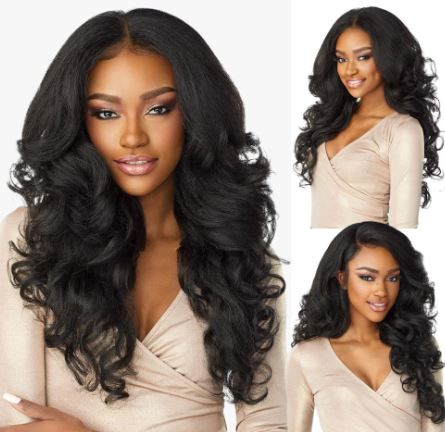With the rise in popularity of wigs, more women are embracing this style choice to express themselves and switch up their looks easily. However, wig wearing can become expensive if pieces don't last due to poor quality or lack of care. Stylist Stephanie shares her secrets on how to get the most wear out of your investments through focusing on higher quality options and proper maintenance.

The Secret to Making Your Wig Last
Invest in Quality Materials
Whether synthetic or human hair, the fibers are key. Remy human hair offers movement and versatility to hold styles long-term. Top-tier synthetics closely mimic the look and feel of real hair. Check reviews to ensure consistent diameters and avoid stiffness. Materials determine how wigs age – poorer options mat and fray quickly while high standards maintain softness through washes.
Pay Attention to Construction
Lace fronts and monofilament tops provide the most natural parting while knots should be professionally bleached for a transparent peek at "scalp." Loose tie settings won't secure hair securely long-term. Ventilated napes prevent overheating too. Ear tab styles avoid destructive gumming/taping at frontal hairlines by keeping wigs snug comfortably. This protects delicate areas from wear over time.
Consider Your Features
Accentuate features through proportional hair volumes. Those with petite frames shine in 130-150 density units versus thicker looks overwhelming smaller faces. Evaluate your style needs honestly – what enhances features while suiting lifestyle? Density mismatched to one's appearance leads to a tell-tale wig silhouette.
Inspect for Flaws Before Buying
Minor mistakes happen, but large, visible flaws like unevenness betray wigs as artificial. Inconsistencies in diameter, color, or texture disrupt believability too. Knots peeking through cause an unnatural "freckled scalp" effect. Carefully examining listings minimizes disappointment from overlooked details.
Care and Storage Tips hair styles require regular conditioning, detangling and protective storage to maintain suppleness and avoid damage like split ends. Synthetics benefit from silicone spray to prevent matting. Limit friction through specialized mannequins and boxes away from elements. Alternating wig use distributes wear too. With stewardship, wigs can easily outlive lesser pieces only lasting months.
With discerning purchasing strategies considering quality, personalized fit, and caretaker wisdom, devoted wig wearers transform illusion into long-term confidence through versatile styles beautifully endured. In embracing wigs as hair investments, women unlock self-expression through near endless options wearing proudly for years.
Differences in Care Between Synthetic & Human Hair Wigs
Synthetic Wig Care:
-
Requires little to no maintenance – Styles generally hold without additional products or tools. Heat tools are usually not needed.
-
Can Air dry – Synthetics dry quickly and maintain their style after air drying.
-
Resistant to damage – Won't experience breakage or splits like human hair. More durable overall.
-
Need occasional brushing – Light brushing or combing helps retain texture and style.
-
Benefits from silicone spray – Spray protects against tangling and frizz as synthetics are prone to these over time. Hair Wig Care:
-
Requires styling – Needs to be blow dried, flat ironed or curled with heated tools to achieve and maintain looks.
-
Prone to damage – Needs conditioning to prevent dryness, splitting and breakage over time and usages.
-
Benefits from deep conditioning – Regular conditioning treatments keeps hair soft and roots nourished.
-
Needs protective storage – Store in breathable soft caps to maintain moisture during rest periods.
-
Regular cleaning needed – Shampoo 1-2x/month and condition weekly to remove product buildup.
-
Shedding is normal – Weekly brushing distributes shedding hair evenly for a natural look.
-
Style holds with product – Creams, sprays or lotions are needed to preserve curls or waves long-term.
Human Hair Wigs
-
Shampooing – It's important to shampoo human hair wigs regularly, around 1-2 times per month, to remove product buildup and keep the hair clean. Use a gentle shampoo specifically for human hair wigs.
-
Conditioning – Conditioning is crucial for human hair wigs. Condition weekly to keep the hair soft and prevent tangling. Look for lightweight conditioners without alcohol or silicone.
-
Deep conditioning – Do weekly or bi-weekly deep conditioning treatments with a nourishing mask to retain moisture and prevent damage. Coconut or argan oil works well.
-
Detangling – Use a wide-toothed comb or brush to detangle wet or dry hair gently starting at the ends and working upwards. Be patient to avoid breakage.
-
Styling – Use the appropriate heated tools like a ceramic flat iron or curling wand to style as desired. Always use a heat protectant product to preserve hair quality.
-
Storage – Store in a breathable wig cap or wig stand when not wearing to maintain hair's texture and shape. Don't fold or roll the wig.
-
Drying – Allow to air dry or use low heat from a diffuser to dry gently after washing. Too much heat can damage hair over time.
-
Protect from sun/elements – UV rays and harsh environments can cause damage like fading or dryness. Use sprays, oils or scarves as needed.
